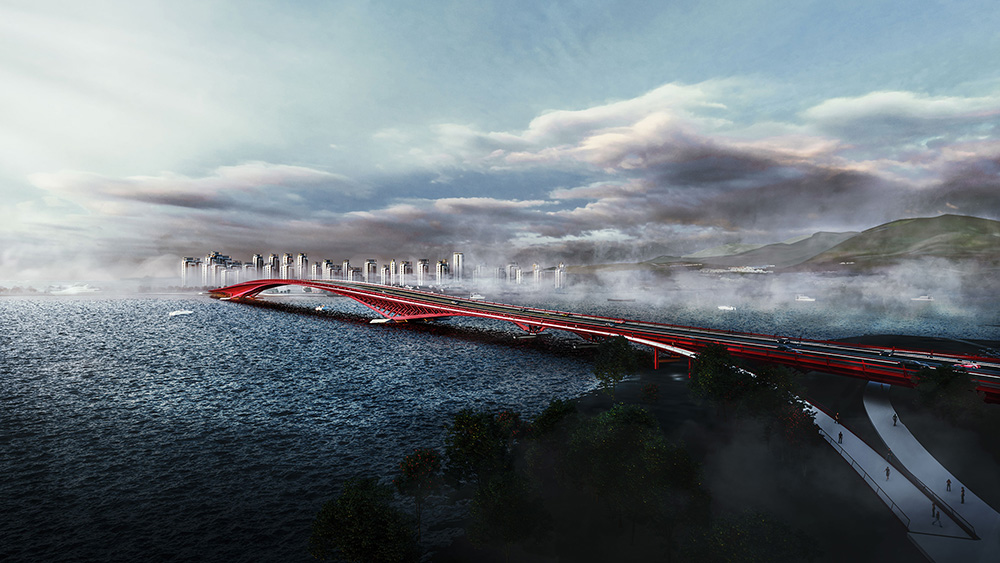Miroslav Hlava | Danjiang Bridge
Are new technologies giving us an opportunity to design buildings differently than in the past?
Adaptive structures offer a possible answer. Structures that are resisting stresses by active adaptation to the load conditions instead of using thousands of tons of passive materials designed to survive to worst possible combination of loads. The active system is able to transfer the loads from more to less loaded parts by using its active elements and thus greatly reduce the required amount of material and energy connected with processing, transporting and using it. Today, when reducing an energy and carbon footpring is a global phenomenon in almost every sector of human activity, the question is, what can we improve in the sector which is consuming the most - building.
The Danjiang Bridge is using for its adaptation to current load conditions 468 linear actuators located within the diagonals of the main arch shaped girders (336 elements) and also within the vertical supports at both ends of the bridge (132 elements). These active elements are expected to create counter forces to the loads affecting the structure and thus reduce the stresses cause by traffic or wind, to distribute loads within the structure, reduce deformations and vibrations, prevent aeroelastic flutter, etc.
Danjiang Bridge is designed as a combination of 4 main arch shaped girders from high performance steel HPS 100W (yield strength 780 MPa), which are significantly low (30 m) compared to the length of the main span 580 m. This ration length / height (about 1:20) allows the main bridge deck to be located directly on top of the girders while having a longitudinal slope less than 6%. Main road located on the bridge consist of two lanes on both sides and has design speed 80 km/h. There are also pedestrian and cycling lanes located on both sides of the bridge. As a result of these requirements the bridge is 55 m wide at the widest point. |


|

